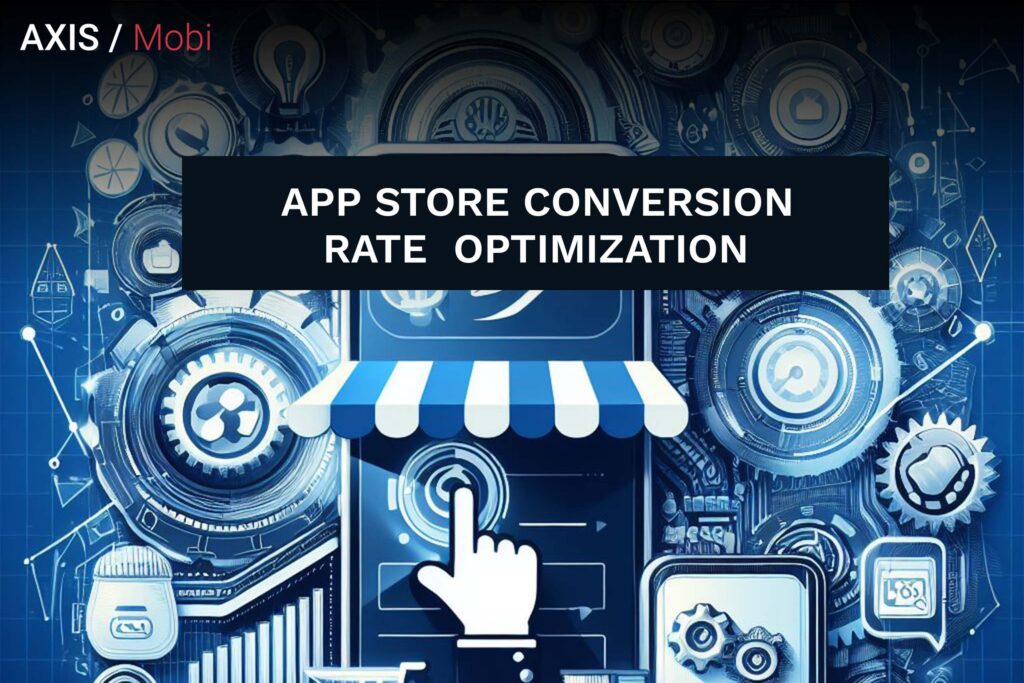In the vast landscape of mobile applications, getting your app discovered is only the first step. Once users find your app in the app store, you need to convince them to download and engage with it. This is where App Store Conversion Rate Optimization (ASO CRO) comes into play. ASO CRO focuses on optimizing your app’s store listing to increase the conversion rate from potential users who view your listing to those who actually download it. In this comprehensive guide, we’ll explore the best practices for improving your app’s conversion rate through effective App Store Optimization (ASO).

Importance of App Store Conversion
Before diving into the best practices, it’s crucial to understand why app store conversion matters. Conversion rate in the context of app stores refers to the percentage of users who download your app after viewing its listing. A high conversion rate signifies that your app’s store listing is doing an excellent job of persuading potential users to take action.

Here are a few key reasons why app store conversion is essential:
- Visibility: Even if your app ranks high in search results or is featured in app store categories, a low conversion rate means you’re not capitalizing on that visibility. Improving conversion increases the return on your ASO efforts.
- Cost-Efficiency: Higher conversion rates mean you’re acquiring users at a lower cost. It’s often more cost-effective to optimize your app store listing than to acquire users through paid advertising.
- User Retention: Users who download your app after viewing your well-optimized store listing are more likely to become engaged users and stay active longer.
- App Store Algorithms: App stores often consider conversion rate as a factor in their ranking algorithms. A higher conversion rate can improve your app’s visibility organically.
Now, let’s explore the best practices for App Store Conversion Rate Optimization:
1. Understand Your Target Audience
The foundation of any successful ASO CRO strategy is a deep understanding of your target audience. You need to know who your ideal users are, what problems they’re trying to solve, and what motivates them to download an app. Here’s how to gain this understanding:
- User Personas: Create detailed user personas that represent your ideal users. Include demographics, preferences, pain points, and motivations.
- User Research: Conduct surveys, interviews, or use analytics tools to gather insights into user behavior and preferences.
- Competitor Analysis: Analyze your competitors’ app listings and user reviews to understand what users like and dislike about similar apps.
2. Optimize App Title and Subtitle
Your app’s title and subtitle are the first elements users see when they come across your app in the store. They play a significant role in both visibility and conversion. Here’s how to optimize them:
- Include Keywords: Incorporate relevant keywords in your title and subtitle. Focus on primary keywords that best describe your app’s core functionality.
- Clarity: Ensure that your title and subtitle clearly convey what your app does. Avoid vague or confusing language.
- Brand Recognition: If your app is associated with a well-known brand, consider including the brand name in the title for brand recognition.
- Subtitle for Additional Info: Use the subtitle to provide additional information about your app, such as its main features or benefits.
3. Craft a Compelling App Description
The app description is where you can provide more in-depth information about your app, its features, and benefits. Here’s how to craft an engaging app description:
- Hook in the Beginning: Start with a hook or a problem your app solves to capture users’ attention immediately.
- Highlight Key Features: List the key features and functionalities of your app. Use bullet points for easy scanning.
- User Benefits: Explain how your app benefits users and addresses their pain points.
- Social Proof: If your app has received positive reviews or awards, mention them in the description to build trust.
- Call to Action: Encourage users to download your app by including a clear and persuasive call to action at the end of the description.
4. Use High-Quality Visuals
Visual assets, including the app icon and screenshots, are vital for conveying your app’s quality and functionality. Here’s how to optimize them:
- App Icon: Design a memorable and relevant app icon that stands out on users’ devices.
- Screenshots: Use high-quality screenshots that showcase your app’s key features and benefits. Add captions or annotations to highlight important elements.
- Video Preview: If possible, create an engaging app preview video that demonstrates your app’s functionality in action.
- Consistency: Maintain a consistent visual style across all your app’s visuals, including the icon, screenshots, and branding.
5. Utilize User Reviews and Ratings
User reviews and ratings significantly influence users’ decisions to download an app. Here’s how to make the most of them:
- Positive Engagement: Engage with users by responding to their reviews, both positive and negative. Show that you value their feedback.
- Address Issues: If users report issues or bugs in their reviews, promptly address these problems with app updates. Mention in the release notes that you’ve fixed the reported issues.
- Encourage Reviews: Prompt users to rate and review your app within the app itself. Ensure that this process is unobtrusive and timed well.
- Display Ratings Prominently: Showcase your app’s ratings and reviews prominently in the store listing to build trust with potential users.
6. Implement A/B Testing
A/B testing involves creating variations of your app’s store listing to see which versions perform better in terms of conversion rate. Both Apple’s App Store and Google Play offer A/B testing features. Here’s how to use A/B testing effectively:
- Set Clear Goals: Define what you want to achieve with your A/B tests. It could be increasing downloads, improving conversion rates, or boosting user engagement.
- Test Visual Elements: Experiment with different visuals, such as app icons and screenshots, to see which versions resonate better with your audience.
- Test One Element at a Time: To isolate the impact of specific changes, it’s best to test one element at a time. For example, test different app icons separately from different screenshots.
- Analyze and Iterate: Based on the results of your A/B tests, make data-driven decisions and continually refine your store listing.
7. Localize Your App Listing
Localization involves adapting your app’s store listing to cater to specific regions and languages. This is particularly important if you’re targeting a global audience. Here’s how to do it effectively:
- Translate Accurately: Use professional translation services to ensure accurate translations of your store listing. Avoid machine translations, as they can lead to misunderstandings.
- Cultural Awareness: Be aware of cultural nuances and preferences in different regions. What works in one country may not resonate in another.
- Research Local Keywords: Conduct keyword research for each target region to identify the most relevant and popular keywords in local languages.
- Optimize Visuals: Localize visual assets, such as screenshots, to resonate with the target audience’s preferences and cultural norms.
8. Monitor and Analyze Performance
ASO CRO is an ongoing process, and it’s essential to continuously monitor and analyze your app’s store listing performance. Here’s how to do it:
- Use ASO Tools: Utilize ASO tools to track your app’s rankings for target keywords, monitor user reviews and ratings, and assess your competitors’ activities.
- Review User Feedback: Pay close attention to user reviews and feedback. Address user concerns and make improvements based on their suggestions.
- Analyze Conversion Rates: Keep an eye on your app’s conversion rates from impressions to downloads. If you notice a drop in conversion, consider making adjustments to your store listing.
- Stay Updated: Stay informed about changes in app store algorithms, guidelines, and trends. Adapt your strategy accordingly.
- Iterate and Test: Continuously iterate and test different elements of your store listing to optimize for better performance.
9. Promote Your App Externally
While ASO CRO primarily focuses on optimizing your app’s store listing, external promotion can also play a significant role in attracting users. Here are some external promotion strategies:
- Social Media: Use social media platforms to promote your app. Share engaging content, run paid advertising campaigns, and engage with your audience.
- Content Marketing: Create blog posts, videos, or other content that highlights the value of your app. Share this content on your website and social media channels.
- Email Marketing: If you have an email list, send out newsletters and updates about your app. Encourage existing users to share the app with their contacts.
- Collaborations: Partner with influencers, bloggers, or other app developers for cross-promotion. This can help you reach new audiences.
- App Review Websites: Submit your app to app review websites and blogs. Positive reviews and mentions can drive traffic to your app.
- App Store Advertising: Consider using paid advertising within the app stores, such as Apple Search Ads or Google Ads, to boost visibility.
Conclusion
App Store Conversion Rate Optimization (ASO CRO) is a critical component of your app’s success. By implementing the best practices outlined in this guide, you can optimize your app’s store listing to increase conversion rates and attract engaged users. Remember that ASO CRO is an ongoing process that requires continuous monitoring, analysis, and refinement. By staying informed about user preferences and app store trends, you can maintain a competitive edge and achieve long-term success in the competitive world of mobile applications.





Pingback: Data Driven Marketing: Strategies for Personalization (2024)